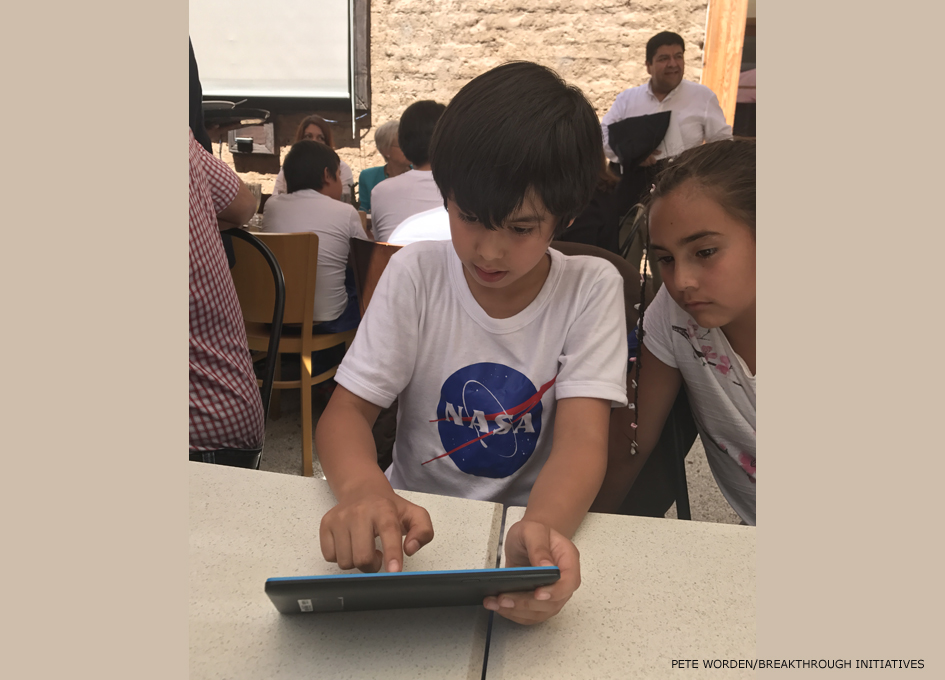Understanding NASA’s Global Reach

A young boy in Chile wearing a NASA t-shirt explains a computer game to Pete Worden from Breakthrough Initiatives. How did he get that t-shirt? Why is he wearing it?
Worden is currently in Chile to announce that Breakthrough Initiatives has teamed with the European Southern Observatory to use the Very Large Telescope (VLT) to observe Alpha Centauri. Alpha Centauri is the destination of Breakthrough Starshot Initiative. Enhancements will be made to the VLT to allow it to detect small, potentially habitable planets in the Alpha Centauri system and possibly other star systems.
So why is a boy wearing a NASA t-shirt in the Atacama region of Chile? Worden did not know. I have a theory.
In 2010 NASA was instrumental in rescuing 33 Chilean miners who had been trapped in the San José copper mine. The mine is located near Copiapó, Chile. Parnal Observatory, where the VLT is located is 411 Km north of Copiapó a town with a population of 200,000. La Serena, the town where this photo was taken, is located 349 km south of Copiapó and also has a population of over 200,000.
These locations are all connected by the same road (Route 5). I would have to assume that NASA remains a very popular entity in the region after the mine rescue – popular enough that its logo is something that children want to wear.
When I was in Nepal in 2009 I was constantly amazed to see street vendors in remote villages selling t-shirts and DVDs featuring American wrestlers and recording artists. Branding is pervasive and utterly global these days. In Chile it would seem that NASA is iconic and cool .
What I am wondering (and will be asking Pete Worden about) is whether people wearing the NASA logo in Chile connect that logo only to the Chilean mine rescuers or whether they connect it to the exploration of space. Chile does have a space agency albeit a small one. A cubesat has been built and is scheduled for launch. Astrobiologists have been visiting the ultra-dry alien-like expanse of the Atacama for many years. Astronomers have been scanning the skies from Parnal for decades. Soon there will be people looking for habitable worlds circling the nearest star system to our own. Chile is not only poised on the edge of South America it is also poised on the cutting edge of the exploration of the universe.
You would think that NASA would want to capitalize on such a potent branding strength. To be certain, they try. Due to Federal regulations the NASA logo cannot be used for commercial purposes or to imply any endorsement without formal approval by NASA. While this limits its use to some extent NASA is able to control its brand – something that is very important. But the one thing that you would think that NASA should be able to do i.e. use that logo in overt advertising and promotion, is banned by Federal law. Congress seems to think that NASA promotes itself too much. Yet they simultaneously chide NASA for not explaining itself better.
So often we hear that NASA (and other space agencies) fail to explain what they are doing and what their activities have to do with the everyday lives of those who pay for the research. Perhaps Breakthrough Initiatives can develop their own memes and branding so as to incorporate the people of Chile in their search for other worlds such that they see their future in this search.
There could be lessons to be learned by NASA in Chile. NASA is a global brand – a brand that has immense visibility. But it is also a brand that is being woefully underutilized.









